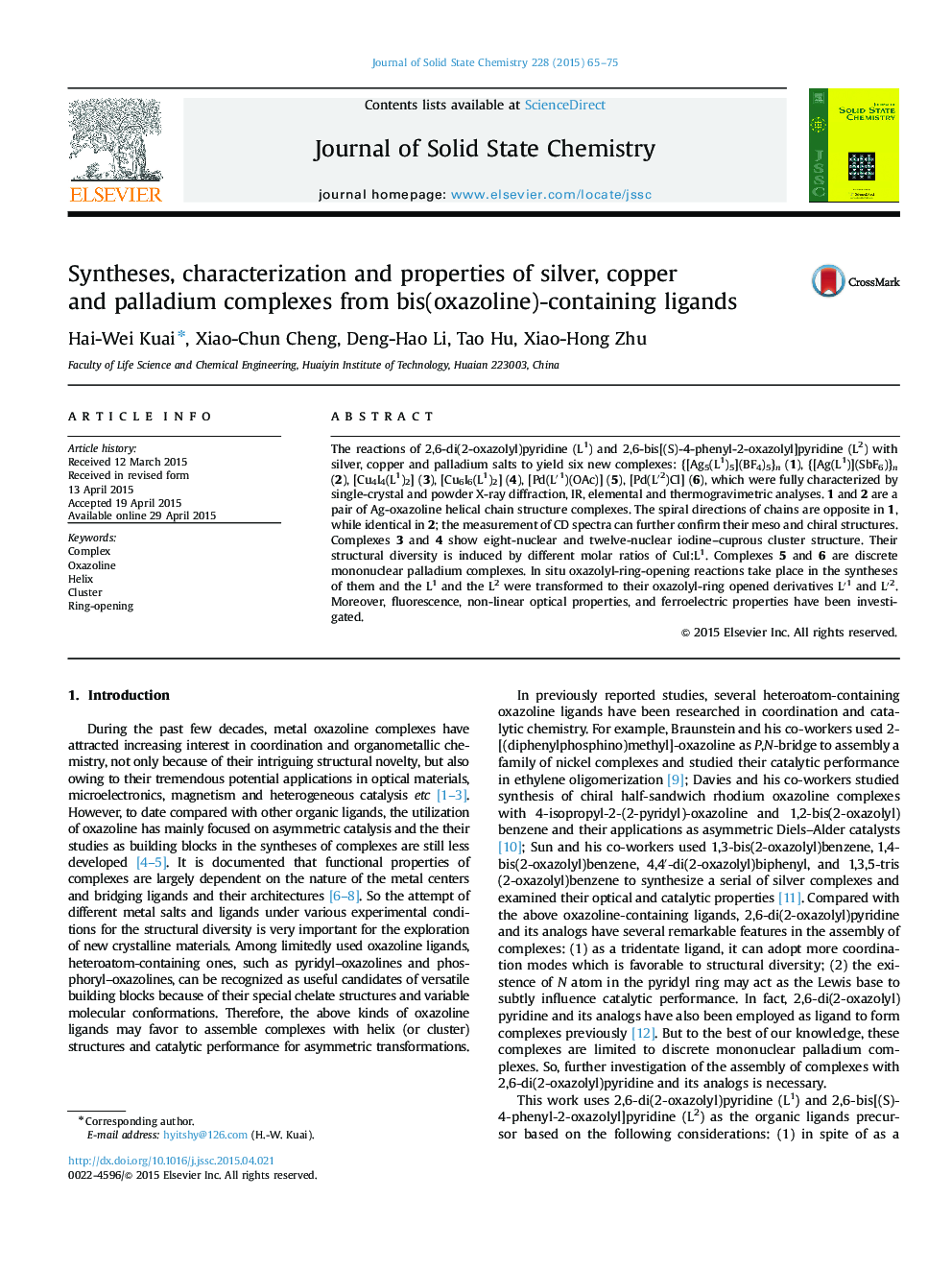| Article ID | Journal | Published Year | Pages | File Type |
|---|---|---|---|---|
| 1331489 | Journal of Solid State Chemistry | 2015 | 11 Pages |
•Helical and cluster structure complexes.•In situ oxazolyl-ring-opening reactions.•Fluorescence, non-linear optical properties, and ferroelectric properties.
The reactions of 2,6-di(2-oxazolyl)pyridine (L1) and 2,6-bis[(S)-4-phenyl-2-oxazolyl]pyridine (L2) with silver, copper and palladium salts to yield six new complexes: {[Ag5(L1)5](BF4)5}n (1), {[Ag(L1)](SbF6)}n (2), [Cu4I4(L1)2] (3), [Cu6I6(L1)2] (4), [Pd(L′1)(OAc)] (5), [Pd(L′2)Cl] (6), which were fully characterized by single-crystal and powder X-ray diffraction, IR, elemental and thermogravimetric analyses. 1 and 2 are a pair of Ag-oxazoline helical chain structure complexes. The spiral directions of chains are opposite in 1, while identical in 2; the measurement of CD spectra can further confirm their meso and chiral structures. Complexes 3 and 4 show eight-nuclear and twelve-nuclear iodine–cuprous cluster structure. Their structural diversity is induced by different molar ratios of CuI:L1. Complexes 5 and 6 are discrete mononuclear palladium complexes. In situ oxazolyl-ring-opening reactions take place in the syntheses of them and the L1 and the L2 were transformed to their oxazolyl-ring opened derivatives L′1 and L′2. Moreover, fluorescence, non-linear optical properties, and ferroelectric properties have been investigated.
Graphical abstract2,6-di(2-oxazolyl)pyridine (L1) reacts with silver and copper salts to yield helical and cluster structure complexes.Figure optionsDownload full-size imageDownload as PowerPoint slide
